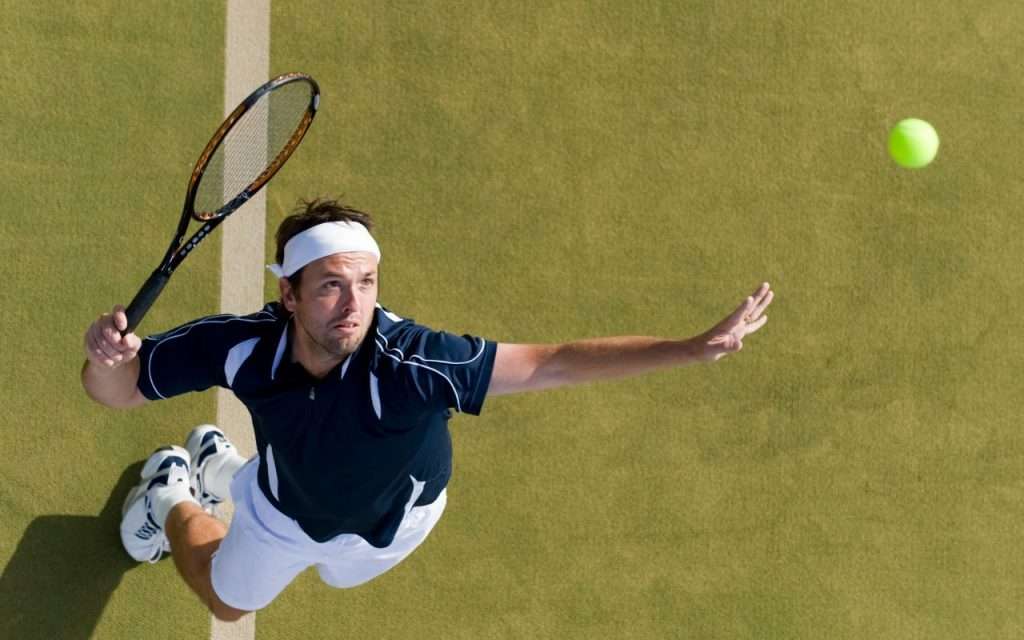
Are you interested in learning more about the fastest way to win a point in tennis?
Perhaps you are trying to learn how to score more aces yourself to save your energy in long back-and-forth rallies.
Or maybe you are simply interested in the history of this powerful and unreturnable serve.
Read on and learn about the history of the tennis ace, or risk missing out on the vital tips you need to add more to your game.
The Definition Of An Ace In Tennis
A tennis ace is a serve that lands within your opponent’s service box and beats your opponent without the ball touching their racquet.
Some people think any serve that is not returned successfully is classed as an ace, but that is not strictly true.
If an opponent manages to get any part of their racquet on the serve, even if there is no way it will result in a successful return, that does not count as an ace. The ball must pass the opponent completely untouched to be deemed as such.
Why Is It Called An Ace?
The term “ace” is from Latin and was originally used for the side of a die containing only one pip.
It was then used in card games as a term for the card valued at one as well.
In tennis, a serve is called an ace because, if successful, the point is won with just one shot.
However, there is no clear reason why an ace is only deemed as such when the ball completely passes the player rather than any serve that wins the point without a return. That said, tennis is a sport rooted in tradition, so it should come as no surprise that the laws surrounding when the term “ace” is used show no sign of changing anytime in the future.
How Do Players Hit Aces?
Players hit aces by choosing a part of the service box to target where they feel the opponent will not reach the ball and won’t be able to return it.
Then, they hit the serve into that area with enough pace and power that it beats the opponent before they have time to react.
Can You Hit An Ace With A Second Serve?
Unfortunately, an ace only counts if it comes from your first serve. If you do successfully pass your opponent with a second serve, it will be incredibly impressive, but it won’t technically count toward your ace tally.
While it is unlikely you will completely beat your opponent with a second serve, it can happen occasionally.
The main reason it occurs is that the returner is often expecting a slower second serve, as you need to focus more on accuracy to ensure it goes in and you aren’t hit with a double fault.
However, if you can surprise your opponent, you can catch them with a powerful serve and turn it into a winner.
It won’t, however, be counted as an ace.
Tennis Ace Records in Professional Tennis
When it comes to tennis ace records, one man dominates the leaderboards. John Isner has a world record of 14,222 career aces, scoring more than 1,100 in a season over four times.
Goran Ivanslevic holds the record for the most aces in a season with a mind-boggling 1,477, and John Isner holds the record for the most aces in a match with 113. That means he won 113 points without his opponent touching the tennis ball.
Interestingly, in second place is Nicholas Mahut with 103, from the same match, which makes sense, given this was during the longest match in history, which lasted over 11 hours.
What is the Future of Tennis Aces?
The future of the ace in tennis shows no sign of change. The term will certainly not leave the game any time soon, nor will it start to mean something else.
However, as more and more players are able to hit aces, thanks to advancements in technology and player skill, the joy of seeing one in person will begin to fade somewhat due to seeing them much more frequently.
However, very few moments in tennis compare to a tall serve and volley player striking a powerful ace to win a key point in a championship match.
FAQs
How Do Servers Hit Aces?
Severs hit aces in tennis by striking the ball powerfully into the corner of the service box. It could be a serve across the returner they can’t reach or a serve down the middle.
How Frequently Do Players Hit Aces?
How often aces are hit depends on several circumstances, including the player serving, the player returning, and the court you are playing on. For example, many more aces are hit at Wimbledon, as the grass makes the ball bounce quicker, making it harder to reach some serves.
Are Aces Becoming Too Easy in Tennis?
With the technical advancements in racquet power, ball speed, and the improvements in player strength, it is getting easier and easier to hit an ace in tennis.
How many points does an ace give you?
An ace only offers you one point, as you would gain from winning a rally, volleying a winner, or your opponent making an unforced error.
Final Thoughts
As you can see, the history of the ace is rich and detailed, and it has brought spectators and players many memorable moments on the court.
Mastering the ace will help take your game to the next level. Alongside these top 14 shots, you should take time to learn.
